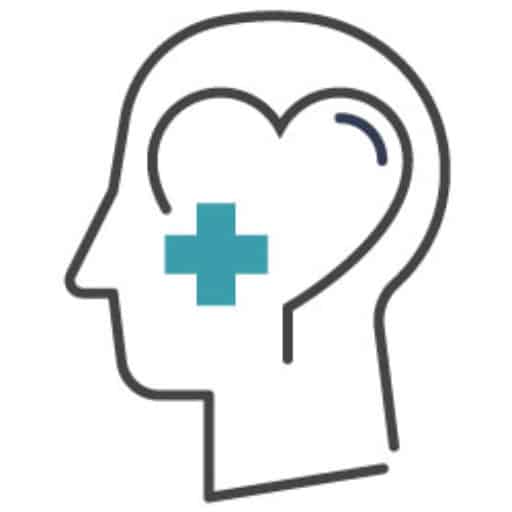The Digital Age has brought wonders — instant communication virtually anywhere in the world, access to the sum of human knowledge at the tap of a keyboard. Unfortunately, it also comes with the price tag of increasing anxiety. Social media is a particular culprit when it comes to technology anxiety, as usage is up to more than 2.5 hours per day for the average person.
What’s driving anxiety with social media use? Fear of missing out keeps people browsing longer and spending more time engaging with social content. Envy and low self-esteem caused by comparisons to content creators can also lead to increasing feelings of anxiety. When your favorite TikToker’s home is always immaculate, it might make you feel anxious to show your home on a day when it isn’t in great condition.
The Secretary-General of the UN reports that mental health is now a critical global issue, with nearly a billion people dealing with a mental health condition. Technology anxiety is adding to the problem, and it’s important to recognize technology stress and find strategies to help address it.
Recognizing the Signs of Technology Anxiety
Anxiety can manifest in many ways. Physically, you might notice sweaty palms, difficulty breathing or increased sweating. Some people experience digestive issues or discomfort, while others may have less obvious signs, including their internal thoughts. Doomscrolling, the act of constantly watching the latest news about a topic that makes you feel depressed or anxious, has become a common enough practice to get a slang nickname. It’s one of the reasons why personal tech is depressing and anxiety-inducing.
Other signs of technology anxiety might include higher stress levels, restlessness and trouble concentrating. Overstimulation is common with endless access to information. Many people feel on-call for work, regardless of their usual working hours, and even social connections can become a burden when they happen too frequently.
Setting Healthy Boundaries
Boundaries are one of the best ways to manage the overstimulation caused by the overuse of technology. In the same way you might set a time period for answering work emails and remain unavailable outside those hours, you can set similar boundaries for your technology use. Strategies that can help reduce technology stress and anxiety include:
- Setting time limits: Limiting the amount of time you spend on your devices may help you avoid overstimulation and the resulting symptoms. Outside of work, you might want to keep all screen time limited to 4 hours or fewer. After all, you spend 8 hours at work, and you’ll want some time to spend with your friends and family each day.
- Creating device-free zones: Labeling certain activities or areas of your home as device-free zones can help create periods of the day that are free from personal technology and the stress it can bring. Dinner time and bedrooms are two good options for device-free zones, since they allow you to focus on connection or relaxation.
- Using digital detoxes: A digital detox is a period of time when you minimize your use of technology. You might suspend all social media and internet browsing the moment you get off work or take a vacation where a digital connection isn’t available. Taking a break from a major stressor can be a good way to reduce the amount of anxiety that comes from that source.
Practicing Mindfulness
Connecting with the physical world and practicing mindfulness is a great way to set aside the worries of the digital one. Mindfulness is the practice of living in the moment, focusing on what you’re doing at that moment. If you’re eating a meal, focus on the smell, look and taste of each ingredient. If you’re planning to work out, pay attention to your body at every moment. Inhabit your body and pay attention to it while going about daily activities. Staying grounded in your physical body is one way to avoid getting lost in the endless stream of information from the digital world.
Cultivating Healthy Habits
Healthy habits translate into improved mental and emotional wellness, not just physical well-being. If you want to feel better, you’ll need to give yourself the time and fuel to do so. Getting regular daily exercise lets you reconnect with your body and fight some of the symptoms of digital overstimulation. Even taking a gentle evening walk is a good way to bring a more healthy mindset to your daily activities.
Get a good night’s sleep as often as you can. Setting the bedroom as a screen-free zone is a good plan for more than one reason. Blue light can disrupt your circadian rhythm, which may make it harder to fall asleep. Set aside your phone and turn off screens at least an hour before bedtime to help improve your sleep hygiene.
Make time for your friends and family. Social media posts are no substitute for time spent together doing something fun. Whether you enjoy crafts, sports or other group activities, make sure you keep social time on your calendar. Entertaining friends and instituting family nights are both ways to balance different social commitments and help avoid the isolation that can result from spending too much time online.
Seeking Support
Anxiety is highly treatable regardless of the cause. Support groups, mental health professionals and medications can all work together to help you overcome the signs and symptoms of overstimulation and anxiety from technology. Whether you’re worried about the latest trend or agonizing over politics, you can learn ways to be constructive and not spend too much time on depressing content. Getting the support you need can help you feel better on a daily basis.
If you’re feeling overstimulated by digital use or you’ve noticed an increase in your anxiety level, contact our team at Restore Mental Health. Our mental health professionals are ready to help you isolate the cause of the change and create strategies to help put you back in the driver’s seat when it comes to technology and overstimulation.



